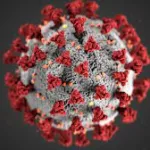Recent media attention has spotlighted a new study examining the potential link between plastic components, particularly bisphenol A (BPA), and autism. The research, which has stirred significant debate, delves into the possible effects of BPA exposure during pregnancy on the risk of autism, especially in boys.
What is BPA?
Bisphenol A (BPA) is a compound used in the production of hard plastics. Commonly found in food and drink containers, BPA exposure is widespread. BPA is known to weakly mimic estrogen, a hormone with various physiological effects. Despite this weak mimicry, concerns persist about the cumulative impact of BPA exposure, leading some countries to ban it in baby bottles as a precaution.
Understanding Autism
Autism, or autism spectrum disorder (ASD), is a neurodevelopmental disorder characterized by challenges with social communication and repetitive behaviors. Symptoms vary widely, from high-functioning individuals with strong community interaction to those requiring 24-hour care. While genetics play a significant role—over 1,000 genes are linked to autism—the precise causes remain elusive. Environmental factors, such as exposure to certain medications during pregnancy, have also been studied.
Study Findings: Human Analysis
The study involved a cohort of 1,074 Australian children, with roughly half being boys. By analyzing maternal urine samples collected late in pregnancy and measuring BPA levels, researchers observed a potential link between high BPA levels and an increased risk of autism in boys, particularly those with low aromatase enzyme activity (a factor associated with estrogen levels).
However, the study’s findings are specific to boys, as there were too few girls with autism and low aromatase levels to draw significant conclusions for them.
Study Findings: Mouse Models
In addition to human studies, the research included experiments with mice exposed to BPA in utero. Mice demonstrated increased grooming behavior and reduced social interaction, suggesting potential autism-like symptoms. Notably, BPA exposure also led to changes in the amygdala, a brain region involved in social processing.
Despite these findings, caution is warranted. Mouse behavior does not always translate directly to human behavior, and the BPA doses used were significantly higher than typical human exposure. Variations in BPA administration methods also introduce variability in results.
Take-Home Message
The study does not establish a direct causal relationship between BPA and autism. It suggests a potential gene-environment interaction where high BPA levels might affect estrogen production and neuronal development, particularly in boys with specific genetic traits. However, exposure to BPA alone is not sufficient to cause autism, and many factors, including genetics and other environmental influences, likely contribute.
Further research is needed to explore these gene-environment interactions and their implications for autism risk. For now, while the study offers intriguing insights, it does not provide a definitive answer regarding the causes of autism.












